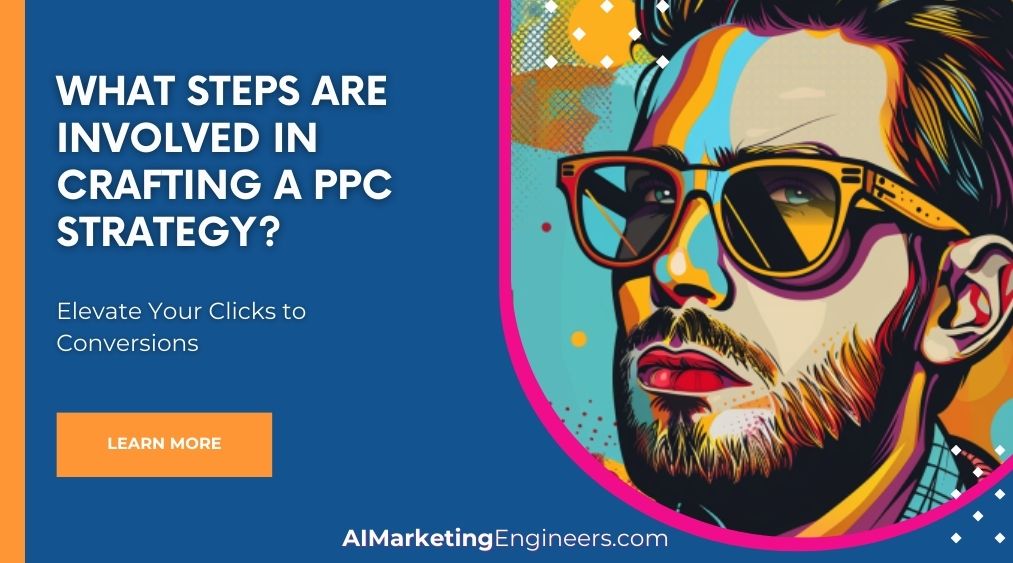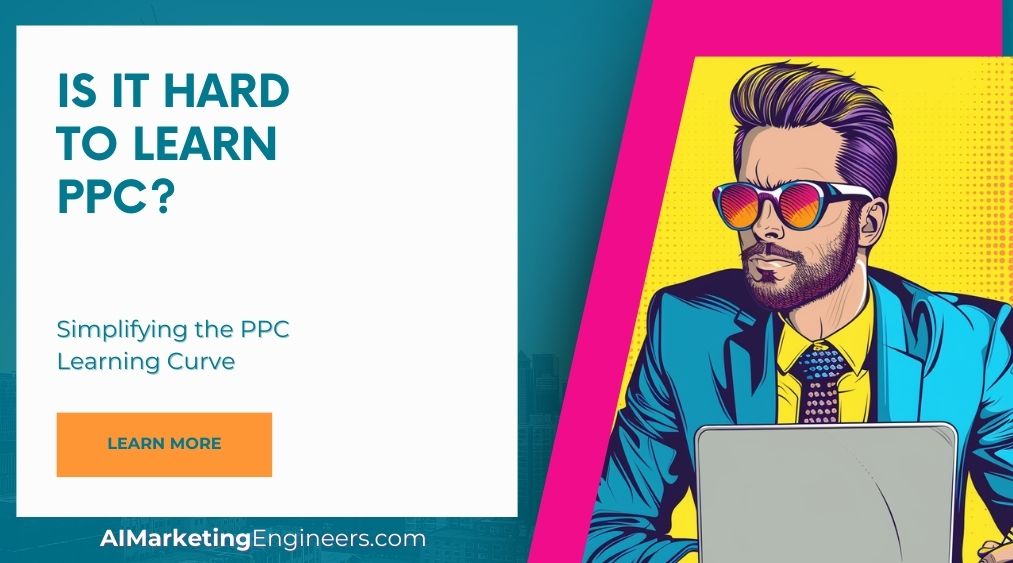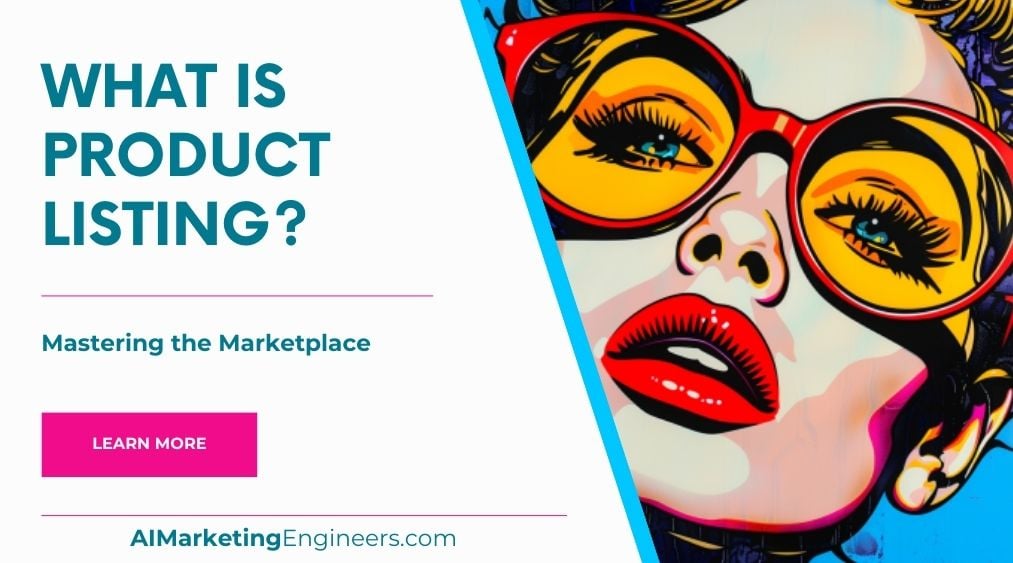Key Takeaways
✅ Defining Goals and Target Audience: Crafting a PPC strategy starts with knowing what you're playing for. Want more eyes on your website or to see those sales numbers climb? Understand who you're talking to by drilling down into who your customers are. Knowing their likes, dislikes, and online habits is the gold dust that will make your PPC shine.
✅ Keyword Research and Ad Group Organization: Think of keyword research as the map to buried treasure. Without it, you're lost. Find the words that your soon-to-be customers are typing into search bars and group them so every ad feels like it's talking directly to them. Better relevance equals a happier Google, and that means better results for you.
✅ Bid Management and Continuous Optimization: Setting the right bids is like finding the sweet spot on a baseball bat. Hit it right, and you’ll knock your ROI out of the park. Keep an eye on the ball with your PPC campaigns – tweak, test, and adjust. Remember, the game of ads never stands still, and neither should you.

Introduction
Ever wondered how some businesses seem to have their ads pop up at just the right time, like magic? Or why your wallet seems a little lighter after clicking on that “too good to pass up” deal in a sponsored link? That's no accident - that's someone wielding a well-crafted PPC strategy.
Crafting a PPC strategy is about more than guesswork; it's about making smart, data-driven moves. It's the difference between throwing your message into the void and placing it right in front of eyes that twinkle with the intent to buy. Your mission? To create ads that not only catch attention but turn that attention into action. Yes, we're talking leads, clicks, sales, and all the good stuff.
In the pages that follow, we'll walk through fresh tips and steadfast tactics that can gear your campaigns for glory. We've got insights that can transform your online advertising game, helping churn clicks into customers, and spending into earning. Stay tuned, because we're about to lift the curtain on strategies that are both actionable and mind-blowing. Ready to up your PPC game? Let's jump in.
Top Statistics
| Statistic | Insight |
|---|---|
| Global PPC Ad Spend: Projected to reach $455.3 billion in 2021. (Source: eMarketer, 2021) | With such a staggering sum, it's clear that businesses all over the world are turning to PPC to get their products and services seen. Can you afford not to be part of this trend? |
| Search Advertising: Accounts for 39% of total digital ad spend. (Source: eMarketer, 2021) | As the largest piece of the digital ad pie, search advertising should be a central part of your online strategy, don't you think? |
| Mobile PPC: Ad spend expected to top $100 billion in 2021, over 60% of total ad spend. (Source: eMarketer, 2021) | With mobile devices taking center stage, it's pivotal to optimize your PPC campaigns for the smartphone-wielding folks out there. Is your strategy mobile-ready? |
| User Demographics: 51% of PPC clicks come from the 25-44 age group. (Source: WordStream, 2020) | Knowing who's clicking the most can help you tailor your ads. Imagine having a secret key to what makes nearly over half your potential customers tick! |
| PPC Market Growth: Expected CAGR of 10.8% from 2021 to 2026. (Source: Mordor Intelligence, 2021) | If the market's growing, so should your involvement in it. Are you set to keep up with—and capitalize on—the expansion? |
Define Your Goals and Objectives
Have you ever set out on a trip with no destination in mind? It's fun for an adventure, but when it comes to business, wandering aimlessly won't cut it. So the first step is figuring out what you want. What's your endgame with PPC? Are you looking to get more people to visit your website, or is your aim to get those online shopping carts filled? Knowing this influences everything you do next. Also, who are you trying to reach? Understand who your ideal customer is, from their age and interests to their online habits. With a sharp image of your target audience in mind, you're on track to craft messages that resonate with them.
Conduct Keyword Research
Think of keywords as the secret handshakes of the internet. What would someone type into Google to find your business? That's where keyword research comes in. Dive into tools like Google Keyword Planner and get to know the phrases your customers are searching for. Finding the right keywords is like finding a street of shoppers already interested in what you have to offer. Opt for those with lots of searches but not as much competition, the sweet spot that can make your ads shine without breaking the bank.
Create Compelling Ad Copy and Landing Pages
Your ad copy is like the cover of a book – it needs to grab attention. But once the cover has done its job, the story inside—your landing page—needs to keep the reader hooked. Your ad copy should sing praises of your product’s benefits and rope in those all-important keywords without sounding like a robot. And when they click through? They should land on a page that continues the melody – appealing, easy to navigate, and with a clear call-to-action. It's like asking for a dance; you want to make it easy for your audience to say yes.
Set Up and Manage Campaigns
Now, let's talk about setting up the actual PPC campaign. Choosing the right platform is like choosing the right party to attend. Google Ads, Bing Ads – where are your customers hanging out? After sending out your invites (setting up the campaigns, ad groups, keywords, and bids), it's not just 'set it and forget it.' Keep an eye on how your ads perform. Tweak your bids, fine-tune your ads, and manage your budget like a pro to keep your campaign on the right track.
Monitor and Analyze Performance
Just like a coach reviews game tape, use PPC analytics tools to track how your ads are performing. Are people clicking through? Better yet, are they taking action once they do? Metrics like click-through rate (CTR), conversion rate, and cost per acquisition (CPA) tell a story. Do more of what works and cut what doesn't. This continuous cycle of monitoring and adjusting shapes a PPC strategy that doesn't just shoot arrows in the dark, but one that hits the bullseye.
Continuously Test and Optimize
Lastly, the magic word in the world of PPC is 'test.' Always be testing. Your audience's tastes can change, new competitors can enter the scene, and the digital market is always in flux. Test your ad copy, landing pages, and targeting options. Mix in different ad formats like display or video ads. Think of it as a recipe; sometimes a little tweak of the seasoning can turn a good dish into a great one. Keep refining your PPC campaigns, and you'll not only meet your business objectives but perhaps even exceed them.

AI Marketing Engineers Recommendation
Recommendation 1: Understand Your Audience Inside-Out: - Before you even think about bidding on keywords or writing copy, have you really sat down to get to know who your audience is? The first step in an effective PPC strategy is to understand the people you want clicking on your ads. What are their interests? What problems do they need solving? Dive into the data - demographics, search behaviors, and even social media interactions can give you a well-rounded picture of who you're trying to reach. Tailor your PPC campaign to reflect the language and solutions your audience is hungry for.
Recommendation 2: Utilize Smart Bidding with Machine Learning: Have you heard about the new kid on the block? Machine Learning is transforming PPC through smart bidding. Google Ads offers options like Maximize Conversions and Target CPA, where algorithms optimize your bids in real-time, aiming for the best results based on historical data. Staying on top of this trend means your ad spend could be more efficient and effective, giving you a better ROI. Are you leveraging these tools to outsmart your competition?
Recommendation 3: Test and Tweak Ads with A/B Split Testing: Ready for a little experimentation? Crafting a PPC strategy isn't a set-it-and-forget-it kind of deal. It’s about constantly testing, learning, and adjusting. With A/B split testing, you can compare different versions of your ads to see what's working best. Maybe it's a different headline, a more compelling call-to-action, or a unique value proposition. Use platforms like Optimizely or Google's own Experiments feature in Google Ads to run your tests and gather valuable data. Because let's be honest, who doesn't want their ads working overtime while spending the same budget?

Conclusion
And there we have it, the journey through crafting a PPC strategy that could be the turning point for your business. It all starts by defining your goals and objectives—do you want more visitors, more phone calls, or more people walking into your store after seeing your ad online? Knowing your audience is actually knowing your own business, who needs what you offer, and how they go about looking for it.
Then, it's all about the right words, and I'm not just talking about the ad copy. Keyword research is the foundation of being found in that vast digital sea—choosing the right keywords can feel like finding a treasure map that leads right to your door.
Your next masterpiece? The ad itself. Remember, creating compelling ad copy and landing pages isn't just about selling; it's about starting a conversation with someone on the other side of the screen. Make sure they know exactly what to do next with a call to action that's hard to resist.
Now, the real game begins: setting up and managing campaigns. Imagine you're the conductor of an orchestra—with every ad group, keyword, and campaign finely tuned to play in harmony, hitting those high notes of clicks and conversions.
But let's not forget the unsung hero: monitoring and analyzing performance. This is where the magic of data comes in—looking at what's working and what's not is like having a GPS for your PPC strategy, constantly recalibrating to keep you on the fastest route to success.
The final piece of the puzzle is to keep testing—yes, continuously test and optimize. This is what keeps your strategy fresh, relevant, and personal. Think of it as talking to your audience, finding out what they like, and giving them more of it.
So, what's the big takeaway here? Whether you're just starting out or you've been in the game for a while, crafting a successful PPC strategy requires a mix of creativity, research, and an almost obsessive attention to detail. Ready to roll up your sleeves and dive in? Remember, it's not just about the clicks and the conversions—it's about starting those conversations that could turn into lasting relationships. Isn't that what we're all after?

FAQs
Question 1: What is PPC (Pay-Per-Click) advertising?
Answer: PPC advertising is this nifty online marketing strategy where you, the advertiser, only fork over some cash when someone clicks on your ad. It's like planting seeds across the internet – search engines, social media, other websites – and you pay up only when there’s a nibble. The ultimate goal? Get folks over to your website and hopefully turning them into customers.
Question 2: What are the key steps in creating a PPC strategy?
Answer: Creating a PPC strategy is a bit like planning a trip. You got to know where you're headed (business goals), who's coming along for the ride (target audience), what paths to venture on (keywords), how much gas money you need (budget), what speed to go (bidding strategy), what tunes to play (ad copy), and where to stop along the way (landing pages). After you hit the road, don’t forget to keep an eye on the map and traffic signals (optimize campaigns) to make sure you are headed in the right direction.
Question 3: How do I define my business goals for a PPC strategy?
Answer: Think about what you want to achieve like you're making a wish on a birthday candle. Want more visitors to your online store? More emails to reach out to? More folks talking about your brand? Define what success looks like for you and align it with your grand plan for your business.
Question 4: What is the importance of identifying the target audience and keywords in a PPC strategy?
Answer: Knowing who you're talking to and what you're talking about is key. It's like hosting a dinner party—you want to serve the right food to the right people. Spotting your crowd and picking the right conversational starters (that's your keywords) makes sure your ads land in front of peeps who might actually click them.
Question 5: How do I set up a budget and bidding strategy for PPC?
Answer: It's all about balance. You don't want to blow all your money, but you don't want to be too stingy either. Figure out what you can afford, and then decide how much you're willing to pay each time someone clicks on your ad. Remember, some clicks are pricier than others, so plan accordingly.
Question 6: What are best practices for creating effective ad copy and landing pages?
Answer: Create ads that talk directly to your peeps – clear, punchy, and to the point with a nudge towards what you want them to do next. Now, when they click through, they land on a page that's gotta be welcoming, crystal clear, and all kinds of relevant. Make it as easy as pie for them to take the next step, whatever that might be.
Question 7: How can I optimize my PPC campaigns for better performance?
Answer: Keep a weather eye on your campaigns. Which ads are bringing in treasure and which are sinking ships? Adjust your game as you go, testing out different messages and designs to see what works best.
Question 8: What are some advanced PPC strategies for experienced advertisers?
Answer: For the old salts who’ve sailed these waters before, there’s stuff like chasing after folks who’ve already visited your site (remarketing), targeting specific types of sailors (audience targeting), ads that change like the tide (dynamic search ads), and letting the compass steer you itself (automated bidding strategies). These tricks can really trim your sails, but they're a bit more complex and can take up more of your treasure and time.
Question 9: How do I monitor and analyze the performance of my PPC strategy?
Answer: Get down into the nitty-gritty of how your ads are doing. Use those fancy tracking tools that come with your PPC platform or bring in a third-party mate like Google Analytics. Keep an eye out for how often your ads are clicked, how much you're paying for them, and what you're getting in return.
Question 10: What are some common mistakes to avoid when crafting a PPC strategy?
Answer: Avoid walking the plank by skipping the homework on keywords or not giving your ads and landing pages the love they need. Be realistic about what you can achieve, and always keep a lookout on what's happening. Missing the mark on who you're targeting or ignoring what your competition is up to can also send your strategy to Davy Jones’ locker.

Academic References
- Ellis, T. S., & Ellis, D. A. (2014). Developing an Effective Pay-Per-Click Advertising Strategy. Journal of Marketing Development and Competitiveness, 8(3), 37-50. In this paper, the Ellis duo walks us through the importance of keywords, goals, and targeted ads. They argue that these are the foundations for PPC campaigns that hit the mark.
- Grewal, J. S., Levy, M., & Kumar, M. (2011). Pay-Per-Click Advertising: An Overview and Analysis. Journal of Interactive Marketing, 25(1), 34-45. Here, Grewal and friends shed light on the magic trio for PPC success: ad relevance, landing page quality, and bid management. Get this right, and you're on the road to PPC glory.
- Goldfarb, A. J., Tucker, C., & Yang, G. Z. (2011). Optimizing Online Advertising: The Role of Search Engine Marketing. Marketing Science, 30(5), 979-1002. Goldfarb, Tucker, and Yang are like the detectives of customer search behavior. They show us how A/B testing can unravel the mysteries of ad copy and landing pages, optimizing PPC campaigns to the max.







